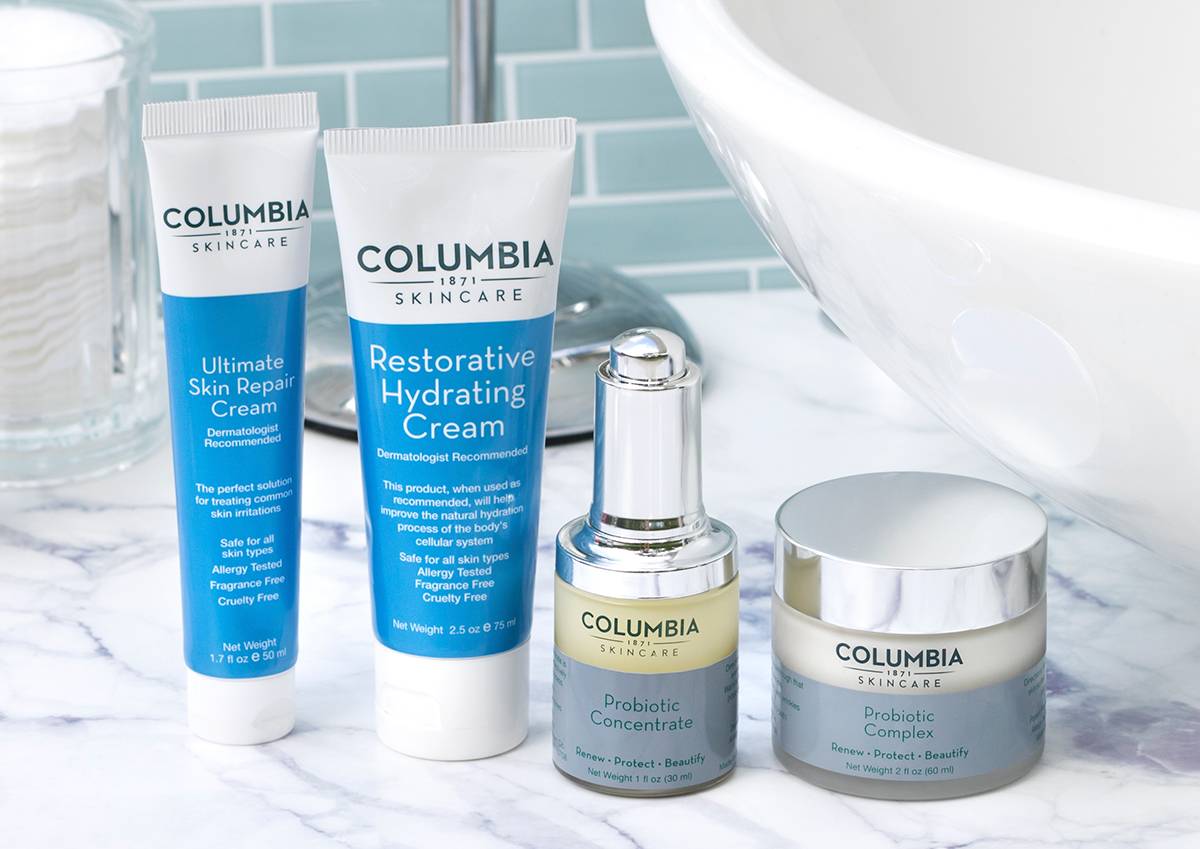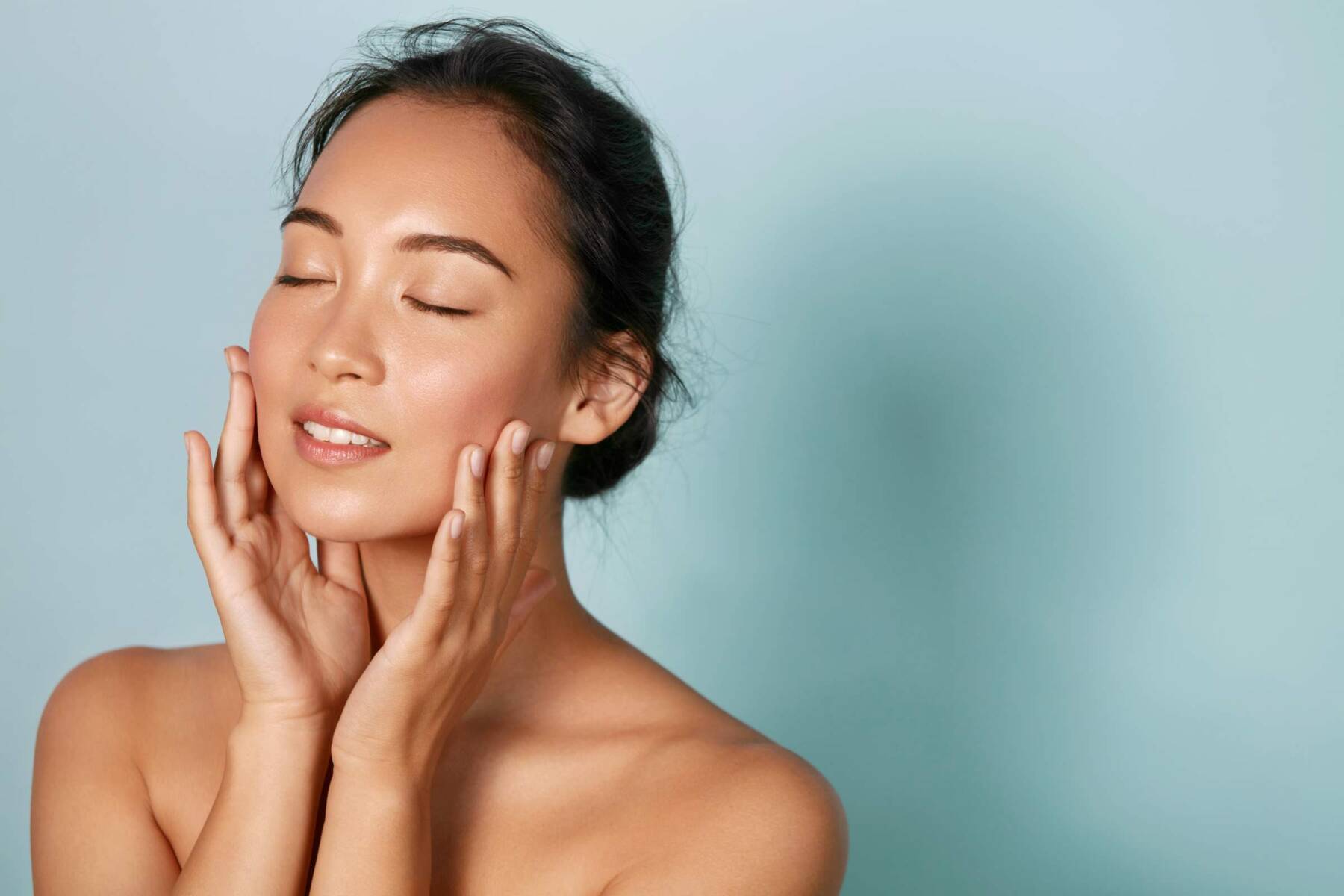
Seeing Skincare Differently
Our skin, the largest organ of our body, is much more than what we see on the surface. It’s a complex and crucial barrier that

For All Skin Types

by Colette Brown
Dermascope Magazine, July 2022
Great philosophers have debated the concept of beauty and what defines it throughout history. Is it subjective, influenced by one’s personal taste, or objective, influenced by others? Although many great minds may not agree on what is aesthetically pleasing, philosophers generally agree that beauty is in the eye of the beholder. What attracts someone is cumulative of not just the physical but the mind, body, and soul collectively.
Regardless of how one defines beauty, there are signs that the human body displays outwardly that are a direct reflection of what is going on internally. The goal to obtain glowing skin goes beyond physical appearance. Glowing skin is a sign of health and wellness, the fountain of youth. The main responsibility of skin is protection. It acts as a first line of defense against the outside world.
THE FACTS
Since the COVID-19 pandemic, people’s personal knowledge of bacteria, viruses, and germs has dramatically increased. People are now aware of the fact that using too much hand sanitizer and chemicals can hinder the good bacteria, leaving them less effective in warding off harmful bacteria. Just as an orchestra must be well-tuned to create the perfect symphony, the body must be in harmony to create the healthiest skin. Where there is harmony and synergy, the positive energy radiates out and manifests physically.
It is well-known that eating nutrient-dense food and good fats, moderate exercise, and drinking plenty of water help hydrate skin and keep it supple. On the opposite spectrum is excessive drinking, eating too much sugar, and eating inflammatory foods that will cause skin to become dehydrated and defenseless. Physical manifestation of damage looks like crepey skin, hollowed eyes, cystic acne, eczema, and psoriasis, just to name a few. Skin also helps protect against exposure to chemicals and assists in regulating body temperature. When skin is compromised by lack of care, harsh weather conditions, poor nutrition, or improper hydration, it may become susceptible to outside intruders.
Healthy, glowing skin created with makeup or short-term treatments are only temporary solutions. A solid understanding of healthy skin and its relationship with what is consumed as well as what is used topically is imperative. A diet high in sugar will cause dehydrated, aged skin; while a diet high in antioxidants, protein, and fiber will feed and nourish the building blocks of good skin. Similarly, skin treated with poor quality ingredients loaded with chemicals will irritate skin, clog pores, and sometimes cause toxic overload. Skin will thrive when it is fed nourishing ingredients.
GLOWING INGREDIENTS
Hydroxypinacolone Retinoate
Hydroxypinacolone retinoate is a revolutionary new addition to the royal family of skin care ingredients. An ester of retinoic acid means that it is bioavailable upon application, without causing the redness and irritation of retinol. Retinol is metabolized by skin, turning it into retinaldehyde before it becomes retinoid acid, its bioavailable form. Hydroxypinacolone retinoate, however, bypasses the need to go through this two-step oxidation process to bind to the receptors.
Hydroxypinacolone retinoate encourages the growth of new, healthy cells. One of the benefits of robust new cells is an increased protective layer that boosts moisture retention in skin. When skin is hydrated, it functions and looks its best.
When cells function optimally, the production of collagen increases rather than declines as it would do naturally. Consistent use helps reverse, minimize, and sometimes remove visible signs of aging. As cells increase in productivity, so does their health.
Imagine a box spring and mattress. A regular mattress without the firm support of the box spring will cause the mattress to sag and become uneven or lumpy. Hydroxypinacolone retinoate is like a magic box spring to help skin not only slow the aging process but help build a more robust foundation to showcase beautiful skin. Daily application of hydroxypinacolone retinoate produces the best results.
Symphytum Officinale
Better known as comfrey (root or leaves), this ancient plant’s medicinal properties have been used for over 2,000 years. It helps reduce inflammation and promotes healing to injuries and some open lesions. Comfrey promotes cellular growth and renewal. The regeneration of cells and this topical treatment work together to moisturize, repair, and soothe skin. Today, it is cultivated sustainably through technology using its stem cells. In clinical studies, it is shown to balance and strengthen the microbiome of skin. It is best used in small quantities.
Lecithin
Lecithin was discovered in eggs in the mid-1800s and received its name from the Greek word for egg yolk, “lekithos.” Commercially used lecithin is derived from both plant and animal sources. In skin care, it is usually plant-based. It is always good to ask manufacturers this question, especially for clients that desire vegan products. Lecithin is a phospholipid which is composed of fatty acids. These phospholipids are present in cellular membranes and are responsible for providing hydration as well as protection. Since it is a humectant, it absorbs moisture from products and the air, which hydrates skin. Lecithin is naturally selective of what is allowed in, but on their short list is oxygen, water, and carbon dioxide. Other unwanted intruders are not allowed to penetrate lecithin’s protective barrier. They are an integral part of maintaining the proper balance of the skin microbiome. In skin care, lecithin also works as an antioxidant and helps key ingredients penetrate deeper into skin.
Palmitoyl Tetrapeptide-7
This peptide complex works in harmony with skin’s microbiome and enhances skin elasticity by stimulating collagen fibers in the dermis. Sun damage, toxins, smoking, poor diet, lack of sleep, harsh treatments or chemicals, and gravity all play a part in escalating the degradation of the integrity of skin. This unique peptide is composed of several amino acids that work together and act as a cellular messenger that communicates with cells to increase production of collagen. They also increase the dermal barrier, keep in moisture, soften the epidermis, and keep intruders out. Another potential benefit of its anti-inflammatory properties is its ability to assist in fighting rosacea.
Phenethyl Alcohol
This naturally sourced and sustainable ingredient is derived from the Pandanus genus plant. Historically, the plant has been used in its entirety in many different geographical areas and in many ways like medication, food, textile, and deodorant. Its healing, medicinal properties include antiviral, anti-allergen, anti-platelet, anti-inflammatory, and antioxidant benefits.
MIXING IT UP
There is science behind mixing ingredients together to create the perfect marriage of ingredient quality and shelf-stability. Phenethyl alcohol is the perfect match to help ingredients live harmoniously, and it assists them in doing what they were meant to do – nourish skin. Phenethyl alcohol has a light, rose-like fragrance and helps maintain the suspension of ingredients and therefore, shelf life in some natural brands. It also assists the largest organ by providing extra protection, acting as a second line of defense in keeping out environmental toxins and bacteria.
Application Order
Knowledge of effective ingredients is important to obtain the best outcome. It is equally important to know the correct order of application of topical products. Some clients will claim their purchased products are not working or will not apply easily. This can be frustrating as an investment was made, and the reward is not being delivered. If a client purchases products, remember to not assume that they will remember the order of application. They may need written instruction or a short video that explains how to use the products properly.
A follow-up phone call a few days after a purchase is always a nice gesture, so clients know their skin care professional cares and is genuinely interested in the outcome they are seeking. Many times, reaching out can prevent heightened emotions for clients who are a little more introverted and do not want to complain. By reaching out, skin care professionals give their clients an opportunity to connect a little deeper and enrich the practitioner-client relationship. A seasoned professional may feel the steps are obvious, but this may not be the case for the client. Instruct them to always start with a clean palate.
A good rule of thumb when unsure about the order of skin care application is moving from liquid to solid. The first product is toner. Liquid is easiest to penetrate the dermal barrier. This is a good time to address the pH balance of skin or targeted ingredients tailored to individual needs. The next step is serums. Because the consistency of a serum is between a liquid and solid, its fluid state allows for key ingredients to penetrate deeper into skin. Allow the serum to dry prior to applying a moisturizer, which should be worn lightest to heaviest.
PRODUCTS PICKS
The question of which products or product line to select is the most common question professionals have to ask themselves when opening a new space or reevaluating their current products. Typically, the products are chosen based on what the spa owner has had the most success with. While there are countless effective products, there are a few factors to consider when making a decision. Geographical factors like elevation and climate can impact a clients’ skin conditions, client demographics may focus on loyal returning clients or transient clients in seasonal destinations, employee turnover may require repeated education ever few months, and average spending of clients may influence which products are best suited for a professional’s business.
The process can be simplified by spas narrowing their focus on what is important for their specific needs. Research on the microbiome is growing every day. It is now well-known that the microbiome is greater in number than human cells. Additionally, it is important to remember that there is a gut-brain-skin connection that cannot be ignored. One of the first factors to consider is the average age of clients. Unless one is working daily on extending their telomeres, biological aging is occurring. Choosing products that nourish the microbiome helps with reversing aging and skin health.
Less is more. When trying to streamline the amount of product lines in a spa due to shelf space or cost, choose a product that addresses multiple skin conditions while being gentle on the microbiome. While they are not hard to find, due diligence is necessary.
If there is ample space and a large budget, consider multiple lines; include ones that have just a few skews alongside robust lines that entice the most fastidious client. Remember that the goal is to have the client participate in their prescribed homecare. Having less steps and maximum results in a skin care routine usually leads to ease of use and greater compliance. Sometimes too many choices lead to frustration and giving up. Keep it simple.
Sourcing
When it comes to food, supplements, and products that go directly on skin, consider using products that do not require far travel. The quality control of the ingredients may or may not be as rigorous depending on where they are sourced from. Sometimes the integrity of ingredients can be reduced during transportation and exposure to extreme temperatures. This is not always the case but should be considered. Additionally, find out where the products are tested. The preference of the spa as well as the clientele should be measured when deciding if a vegan line is the best bet.
For personal home use, finding a line that works well with one’s own skin and uses quality ingredients such as those listed in this article is essential. Remind clients that consistency is key in a skin care routine in addition to getting a monthly facial to work with a professional on any skin care goals.
Beauty and health go hand in hand. The great philosopher Hippocrates said, “Health is the greatest of human blessings.” Beauty and well-being radiate from the inside out and outside in. Taking a moment to look at one’s personal self-care as well as one’s products can ensure one is maximizing their healthy glow.

A licensed clinical aesthetician since 2001, Colette Brown is the director of education at Columbia Skincare where she leads the professional products division. In her role, she oversees education and treatment protocol training and supports research and development with new product development. Brown possesses a deep passion and understanding of the healing benefits of topical probiotics and how they contribute to the overall health and wellness of skin’s microbiome. Based in Beverly Hills, California, Brown has a Bachelor of Arts in education, is a certified holistic practitioner through the Kresser Institute, a licensed phlebotomist, and has certifications in advanced skin care procedures.

Our skin, the largest organ of our body, is much more than what we see on the surface. It’s a complex and crucial barrier that

In the world of skincare, countless products vie for our attention, promising a youthful glow, wrinkle reduction, and age defying perfection. But with so many

In the realm of skincare shopping, there’s a little-known secret that can make a big difference both to your wallet and the planet: opting for

The “wellness” industry is booming. From colon cleanses to crystal healing, the market explodes with promises of optimal health, inner peace, and eternal youth. But

At Columbia SkinCare, when we ponder the question, “Are you feeling well?”, we delve deep into the essence of what wellness truly signifies. In our